It has no delete key. Where the delete key should be, the keyboard says, “Keep Going”. It has no internet connection. The chassis is made mostly of bamboo. It has a large E Ink screen and could run for months on a single charge. It is a writer’s dream machine.
I present to you all on Steemit, this:
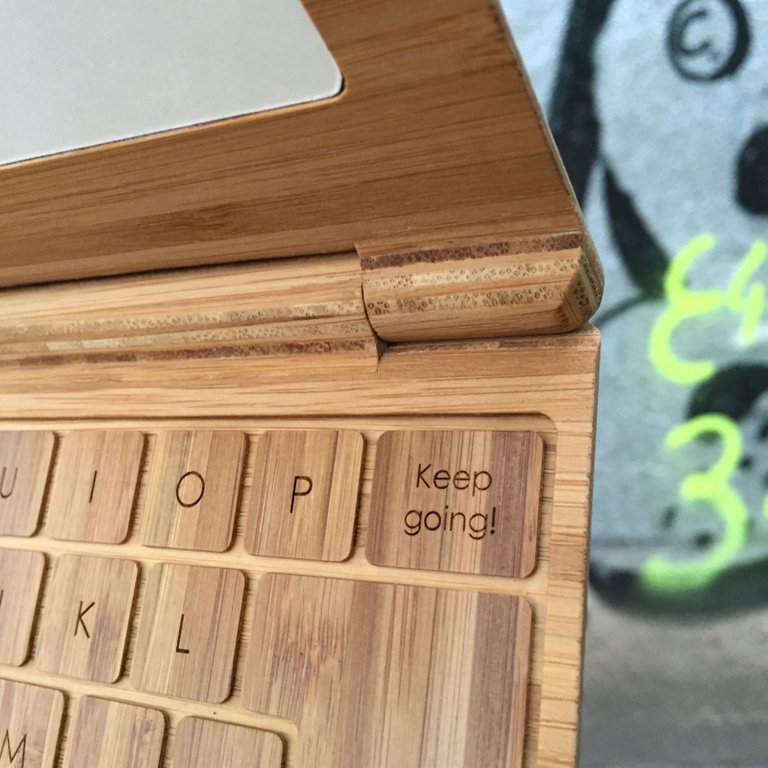
This wooden laptop was lovingly hand-crafted (and CNC routed) by the talented @lenskonig based on a design we created together:
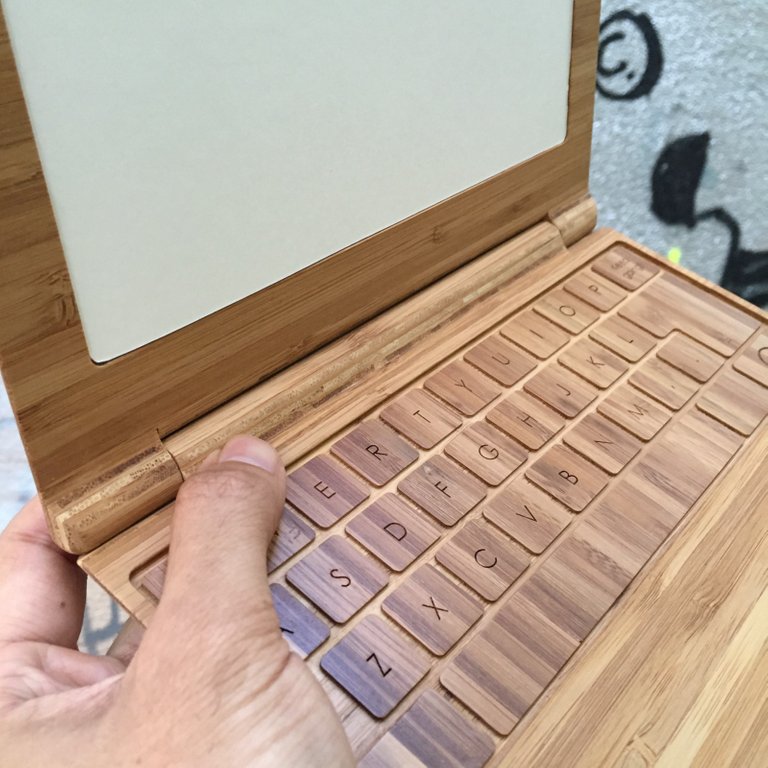
Modern laptops are distracting. That is clear enough. It's impossible for most people to write or think anything meaningful, because modern computer-use involves constant bombardment from a sprawling hell of pop-up notifications.
The author Johnathan Franzen has the same opinion, once writing:
“It’s doubtful that anyone with an internet connection at his workplace is writing good fiction”
So, @lenskonig and I decided to help society find salvation from this modern disease. We built this wooden laptop made mostly of bamboo, with an E Ink display, no internet access, and a single app: A minimalist word processor in which you can only type forward.
Yes, you can only type forward. No delete key. Momentum is the thing; editing is for cowards.
Well, technically, our idea is that you edit later on a full-blown computer.
Here are some more images of the prototype:
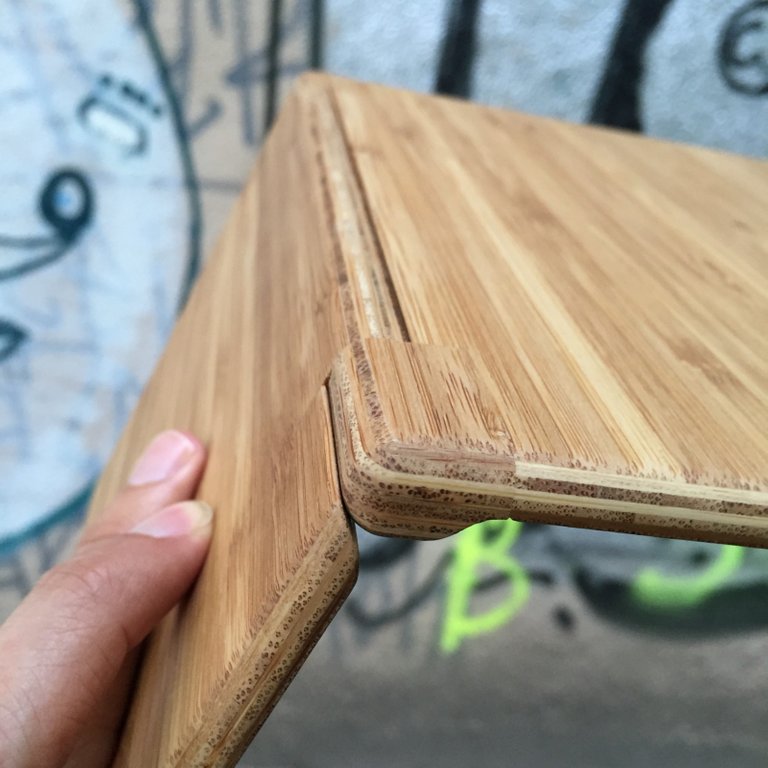
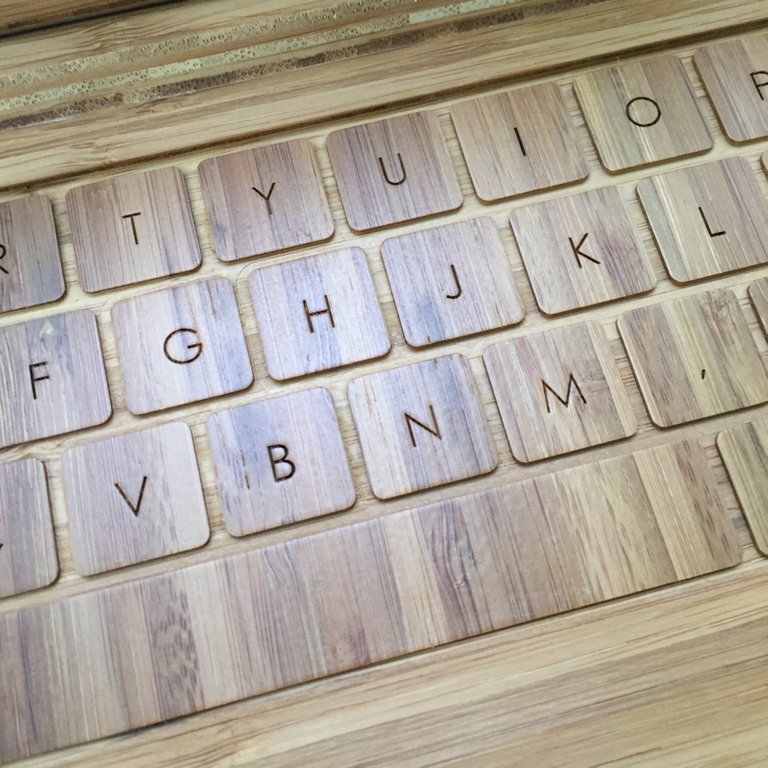
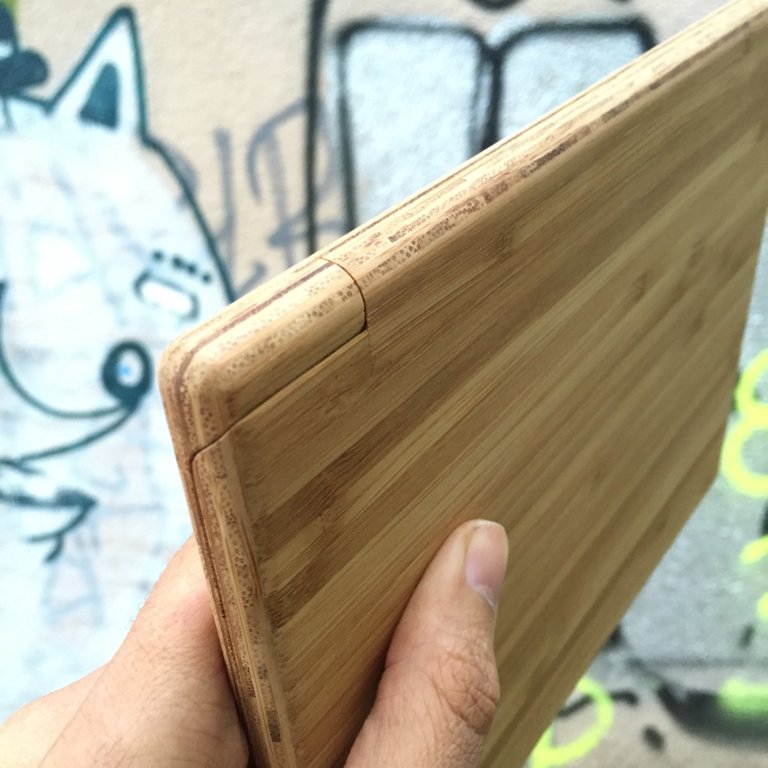
Our project met a stumbling block though. We can't find an engineer who is able to connect an E Ink display to a low-power microprocessor and keyboard. And so, beautiful though she is, the distraction-free wooden-laptop remains a lonely prototype.
I feel that @lenskonig's work on this machine is extraordinary. The detailing on our prototype is optical nirvana. Perhaps we will return to this project one day soon, if the stars align.
That is stunning. Is it just a kindle in a wood case?
Thanks, @kyle.anderson.
Conceptually it's not far off the Kindle. But, technically, it's a larger E Ink screen than the Kindle's.
We got to the point where we had prototype screen hardware from the E Ink corporation, but we couldn't find an engineer who was able to connect the components together on our budget... which was a few hundred dollars.
Also, there seemed to be technical hurdles even if cash wasn't an issue. Although the possibility of a DIY solution appears to be getting closer, based on the work of the indie hacker community: http://hackaday.com/2017/04/20/e-ink-display-driven-diy/
Awesome work! Love your involvement with the DIY community. Keep us updated on future prototypes.
Thanks for such a nice compliment, @kyle.anderson.
Will keep you updated :)
Beautifully conceived and executed. Please don't give up! Of course it would ultimately depend on retail price, but it would almost certainly be a hit given the increasingly "conscious" alternative literary market in readers and burgeoning writers - bring it! Where can I sign up for newsletter / release notes. I want one! (And bamboo is of course one of the most extraordinary sustainable and versatile material technologies available to man <3
Thanks for such encouraging words, @nik9 :)
I'll talk to @lenskonig about how you can keep in touch with us about a possible future release. At the moment the project is stalled until the universe permits us to meet an enthusiastic hardware engineer.
Bamboo is fantastic yes. I invite @lenskonig to comment here on the experience of creating this out of bamboo.
I started by using very thin quarter-sawn maple. Maple is dense and close-grained so I thought it would maintain structural integrity. Alas, all wood—even plywood—will warp if moisture evaporates from one face and not the other, as will clearly happen in this application. I tried reinforcing the maple with carbon fibre bars but wood is very strong so that failed.
Then a man suggested bamboo, which I had not considered. Not only is it ecologically magnificent, but it also has no natural will to warp because the sheet material is comprised of very thin narrow strips instead of honking great tree parts.
The great challenge was to create a lid and base that remain flush with each other. Very, very flat. Bamboo plywood does still like to warp a little, as detailed in the first paragraph, but for this model it worked very nicely, especially once sealed with wax (I think I used wax). Also, once there are guts inside it will be no more than a shell, so will easily retain its form. (This would be equally true with maple of course, but that is a distant memory now because bamboo holds so much intrinsic joy.)
The only issue I found with bamboo is its fibrousness. Once varnished or polished, or whatever, it is strong and reasonably durable. But while cutting and working, the fibres have a tendency to break away. This is a manageable issue with any timber, but bamboo has much less integrity. In particular it sticks to all but the most delicate masking tape. Masking tape is indispensable for clamping wood while gluing certain joints. The ultimate effect is that it pulls fibres away from the smooth, raw surface when removed. I'm sure there is a solution for scaled production, but for this model I had little choice. Maybe @matrjoschka did not even notice. I wonder. Did he notice?
He didn't. It looks perfect.
Thanks for the working insight into production. Have you considered the different bamboo species? For example "Guadua" is a timber bamboo used in South America for structural engineering (bridges, trusses, etc)
This looks awesome!!!!
Thanks @aishwarya
Glad you like it !
Looks really great :)
Thanks @patelincho
:)
It might ruin your form factor, but a Raspberry Pi could fit your needs. Boot to Linux with an auto-run modification to LibreOffice, perhaps?
Thanks for your thoughts, @jacobtothe.
I'm considering something like a Raspberry Pi maybe for a significant variation on this design. Like you say, it won't fit with this form-factor.
Ideally, if we went ahead with the design in the photos, we'd want to use a very small form-factor microcomputer. More like what's in a mobile phone, or something even more low power, perhaps even postage-stamp-size, since word-processing doesn't need much muscle.
Thank you for these compliments.
Always.